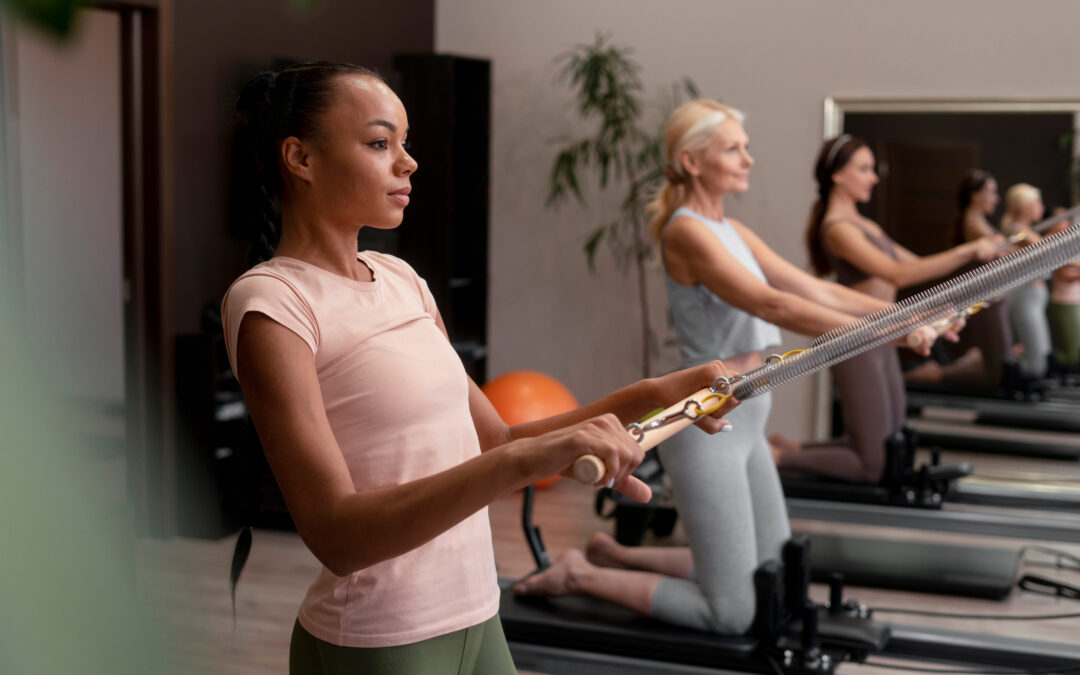The Impact of Resistance Training on Bone Mineral Density in Older Adults
Why Strength Matters More Than Ever—Especially for Menopausal Women
Aging is inevitable, but frailty doesn’t have to be.
One of the most powerful and underrated tools in preventing age-related bone loss is resistance training. While it’s commonly associated with muscle building, research confirms that resistance training can also stimulate bone formation, prevent osteoporosis, and enhance bone mineral density (BMD)—a critical health marker, particularly for older adults.
In this post, we explore how resistance training impacts bone health in both men and women, and why menopausal women stand to gain the most.
Bone Health and Aging: A Silent Risk
As we grow older, we naturally lose bone mass. After age 30, the rate of bone breakdown begins to outpace bone formation. This decline accelerates significantly in women around menopause, due to the sudden drop in estrogen, a hormone essential for maintaining bone density.
According to the International Osteoporosis Foundation, postmenopausal women can lose up to 20% of their bone mass in just 5–7 years after menopause1.
This increases the risk of osteopenia (low bone density) and osteoporosis—a condition marked by brittle, fragile bones prone to fractures.
What Is Resistance Training?
Resistance training (also called strength or weight training) involves exercises that cause muscles to contract against an external force such as:
-
Free weights (dumbbells, barbells)
-
Resistance bands
-
Body weight (push-ups, squats)
-
Weight machines
This form of exercise strengthens muscles, but just as importantly, it provides mechanical stress on bones—stimulating them to grow denser and stronger.
The Science: How Resistance Training Boosts Bone Density
Bones are living tissue that adapt to the loads placed upon them. The mechanostat theory proposes that when bone is subjected to mechanical strain, it stimulates osteoblast activity (cells that build bone), increasing BMD2.
This makes resistance training particularly effective for:
-
Spine and hip bone density (common fracture sites)
-
Improving posture and stability
-
Reducing fall and fracture risk
Special Focus: Menopausal and Postmenopausal Women
Menopause marks a hormonal turning point, where the body’s natural bone-preserving hormone—estrogen—takes a nosedive. Without enough estrogen, osteoclast activity (bone resorption) increases, leading to rapid bone loss.
Why Resistance Training Is Critical for Menopausal Women:
-
It mimics the bone-protective effects of estrogen through physical stress.
-
It strengthens surrounding muscles and joints, reducing fall and fracture risk.
-
It supports overall hormonal balance and metabolic health.
Key Research Findings
1. Postmenopausal Women Benefit the Most
A 2022 meta-analysis published in Osteoporosis International reviewed 17 randomized controlled trials involving adults aged 50+. It found that resistance training significantly improved BMD at both the lumbar spine and femoral neck in postmenopausal women3.
“The most significant BMD improvements were observed in postmenopausal women who engaged in progressive resistance training for at least 24 weeks.“
2. Combined Exercise Works Better
A study published in Bone (Watson et al., 2015) found that combining resistance training with high-impact or weight-bearing exercises (like jumping or brisk walking) offered greater gains in BMD compared to resistance training alone4.
3. Long-Term Training Is Key
Long-term interventions (6 months and beyond) are more effective in preserving or increasing BMD. A study from The Journal of Bone and Mineral Research (Kerr et al., 2001) showed that older women who performed resistance training twice weekly for a year maintained or improved BMD, while sedentary peers showed loss5.
Benefits for Both Men and Women
While women face higher osteoporosis risks due to menopause, men are not exempt. Resistance training benefits all older adults by:
-
Preserving bone mass
-
Increasing muscle strength
-
Improving balance and coordination
-
Reducing fall risk
-
Boosting confidence and independence
Getting Started: Safe Resistance Training for Older Adults
Guidelines from the American College of Sports Medicine (ACSM):
| Category | Recommendation |
|---|---|
| Frequency | 2–3 non-consecutive days per week |
| Intensity | Moderate (60–80% of 1-rep max) |
| Sets/Reps | 1–3 sets of 8–12 reps |
| Exercises | Target major muscle groups: legs, back, arms, core |
| Supervision | Begin with a certified trainer or physiotherapist, especially for those with osteoporosis or mobility concerns |
Note: Individuals with diagnosed osteoporosis should avoid forward-bending, twisting, or high-impact movements that increase fracture risk.
Support Bone Health with Nutrition
Resistance training works best when paired with:
-
Adequate Calcium (1,000–1,200 mg/day)
-
Vitamin D (800–1,000 IU/day)
-
Protein to support muscle repair
-
Magnesium, Vitamin K2, and Collagen for bone metabolism
Real Talk from Experts
“Resistance training isn’t just about building muscle—it’s about building resilience. Especially for postmenopausal women, it can be a game-changer for long-term independence and vitality.”
— Dr. Miriam Nelson, author of “Strong Women, Strong Bones”
Conclusion: Strength Is Your Shield
Bone loss may be silent, but your actions don’t have to be. Resistance training is a proactive, evidence-based solution for improving bone mineral density, preventing fractures, and aging gracefully.
Whether you’re in your 50s, 60s, or beyond, it’s never too late—or too early—to pick up the weights and start reclaiming your strength.
Let Vitalis Origin remind you: resilience begins with resistance.
References
-
International Osteoporosis Foundation. (2023). Facts and statistics. https://www.iofbonehealth.org ↩
-
Frost HM. (2003). Bone’s mechanostat: A 2003 update. The Anatomical Record, 275A(2), 1081–1101. ↩
-
Zhao R, Zhao M, Zhang L. (2022). Impact of resistance training on bone mineral density in older adults: A meta-analysis. Osteoporosis International, 33(5), 1019–1035. ↩
-
Watson SL, Weeks BK, Weis LJ, Harding AT, Horan SA, Beck BR. (2015). High-intensity resistance and impact training improves bone mineral density and functional performance in postmenopausal women with osteopenia and osteoporosis: the LIFTMOR trial. Bone, 79, 227–232. ↩
-
Kerr D, Ackland T, Maslen B, Morton A, Prince R. (2001). Resistance training over 2 years increases bone mass in calcium-replete postmenopausal women. Journal of Bone and Mineral Research, 16(1), 175–181. ↩

